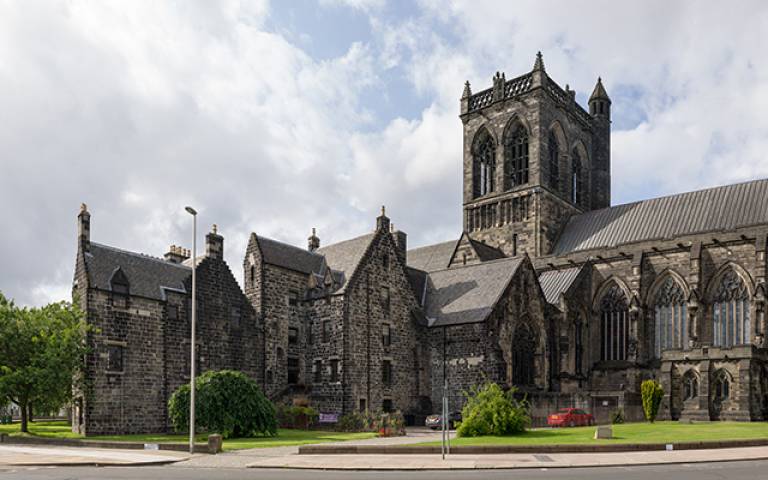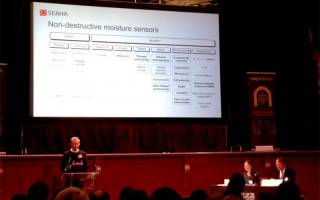Student Scott Allan Orr publishes on moisture meters in International Stone Congress
12 January 2017

The 13th International Congress on the Deterioration and Conservation of Stone was hosted by the University of the West of Scotland from the 6th to the 10th of September 2016. 215 delegates from over 35 countries coalesced in Paisley, Scotland to share their research, experience, and insight. The International Congress on the Deterioration and Conservation of Stone is a quadrennial event that brings together the world-wide community of researchers, managers and practitioners who are concerned about the conservation of cultural stone structures and objects.
Most mechanisms of stone decay are fostered by — or directly related to — the presence and/or movement of water. Being able to efficiently and accurately survey historic stone buildings for localised water contents informs conservation management and treatment. Handheld moisture meters are commonly used to try and evaluate the condition of a building. These utilise a range of physical properties as proxies for moisture, such as electrical resistivity and microwave attenuation. These devices are generally stream-lined for ease of use, which means that they are not always well understood.
Scott Allan Orr‘s research has investigated how handheld moisture meters compare to robust scientific tools, in order to inform how their results should be interpreted when applied to stone masonry. His work was presented as part of a session on portable non-destructive testing methods.
His findings are available for open access download: within the UWS catalogue (entire proceedings), or as an individual article through ResearchGate.

Photo: Scott presented his insights into handheld moisture meters as part of a session of portable non-destructive testing methods. Image: L. Fusade.
Handheld moisture meters have additional benefits for building surveying besides their ease of use. This research showed that, due to their high resolutions, they were able to characterise localised moisture contents of mortar joints and near-edge effects that were not distinguished by a more robust technique that relied on tomography — an interpolation technique.
This research also demonstrated that interpreting survey results should consider the specific underlying technique. For example, the ability of a microwave-based device to detect moisture at depth will be reduced if there are very high moisture contents at the surface, as this causes much of the signal to be reflected or attenuated. As well, electrical resistivity meters may not provide useful information at lower moisture contents, as the dry stone does not conduct electricity sufficiently to provide a reading.
Links
- Read Scott Orr Comparability of non-destructive moisture measurement techniques on masonery during simulated wetting in 13th International Congress on the Deterioration and Conservation of Stone
- Read the conference proceedings
- Scott Allan Orr student profile
- Find other publications by SEAHA students
Header mage: conference delegates were warmly welcomed into Paisley Abbey for an opening evening reception on September 6. CC BY-SA 3.0 Paisley Abbey from the south east, Colin.
 Close
Close

